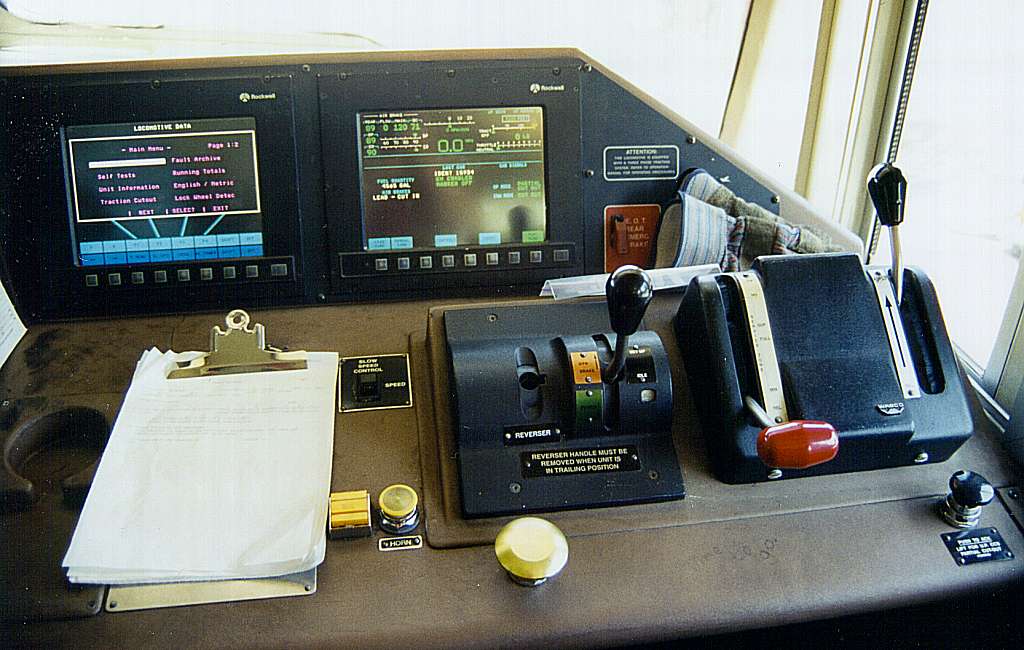Devon,
I think this might help answer your question from the perspective from the cab. Hopefully I don’t go too deep in the weeds.
Here’s an image of a standard AAR desktop control stand, one which I would likely guess is similar to what Amtrak uses. Right to left. Independent, automatic (train brake), throttle (I’ll explain), reverser (controls forward/back). Don’t worry about the rest of the buttons. The throttle has basically 3 settings; dynamic (all the way forward), neutral, power (all the way back). Both dynamic and power settings have a series of settings 1-8, with 8 being the highest.

My educated guess, as a former engineer, is that prior to the curve the engineer was in a high throttle setting (6-8) as he was accelerating through the 60 mph straight section (see below, guessing it’s 60 because he’s going 58).
If I was running this is how I normally would approach the curve.
If he drops the throttle to idle to slow down for the curve the train is going to bunch up. So in normal circumstances, he leavves the throttle setting in a high setting, and makes a 6-8 pound set on the train line (red handle), making what rails refer to as Powerbraking. This keeps the slack tight, but allows the train to slow. As the air starts to ‘bite’ he likely drops a couple of notches (1-3) and makes another set of air. As he enters the 50 mph curve, he kicks off the air (if not already), than take a notch or two. As soon as the rear end clears the curve (remember this is Amtrak, not a 5000’ train), he notches back up to 8 for the higher speed section. Not once, does he remove the throttle from power and place it into dynamic braking to slow down for the curve.

I think I read that the NTSB released information saying that the event recorder showed the throttle in a high throttle position. This leads me to believe that for what ever reason, the engineer was unable to make either his initial brake application, or the second reduction to further slow the train down. Now Amtrak responds a lot faster than a 5000’ freight train, so it’s highly likely that he wasn’t planning on making a set until the last moment, because he knew the train, and knew the territory it’s likely that he (and other engineers) had a specific landmark in which they used to make a set.
Why he didn’t make the set? Who knows, that’s what the NTSB is going to find out hopefully.
I’ll just as an a former freight engineer, it’s really, really fun to run a train by powerbraking and not using dynamics. Makes a really smooth ride, and quick acceleration out of the slow areas. The best was powerbraking a loaded 15,000 ton grain train from 45mph down to 25 mph to go through a turnout…If you timed everything just right, the lead engine would hit the first set of points at 25-26 mph…

